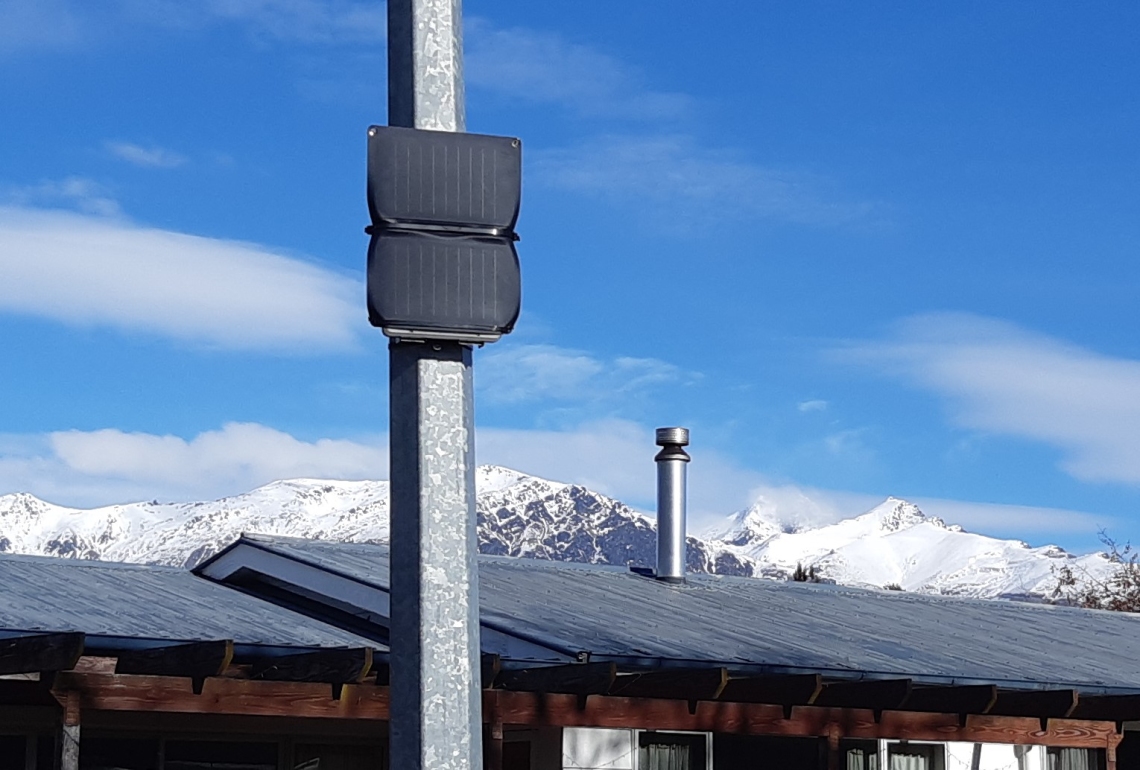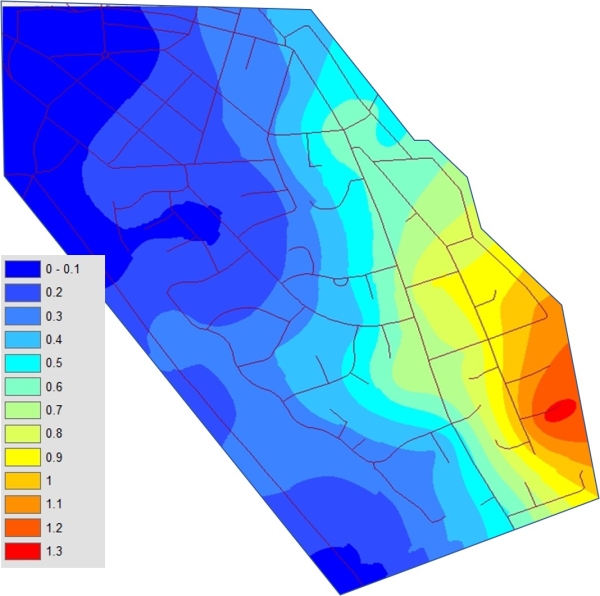ODIN sensors provide valuable insights into air quality
ODINs are designed to be used in a network (typically 20 to 30 nodes) over an area impacted by high emissions of particulate matter. A typical network deployed for a minimum of a month is sufficient to robustly map air quality over a study area.
ODINs provide valuable insights in airsheds impacted by wood-burning for domestic heating, including:
- Improved understanding of the representativeness of current and future permanent monitoring sites.
- Identifying groups at higher risk from poor air quality.
- Informing options for more targeted mitigation.
- Providing before and after evaluation of air quality interventions.
Visualising and analysing data
ODINs measure particulate matter (PM2.5 and PM10) every 5 minutes or faster (see features below) and send it to the cloud via the mobile phone network.
Every morning at 6am these data are automatically converted into an animation of air quality over the past 24 hours. These animations accumulate as a playlist hosted on an online video sharing site.
The animations demonstrate the development of ‘sweet’ and ‘sour’ spots of pollution as pollution is transported from some locations and accumulates in others. After a few weeks aggregate maps can be created showing average pollution overall and at different times of the day. These maps often show that the areas experiencing the biggest impacts do not always correspond to the areas with the highest emissions. To view an example – see our research in Arrowtown in winter 2019.
Features of ODIN sensors
ODINs are designed to be fixed to streetlights, power poles or other street furniture and take less than 5 minutes each to install. Once installed, they can run for months unattended.
Specifications include:
- Ability to measure PM10, PM2.5 and PM1 every 1 to 5 minutes using a Plantower sensor.
- Small (26 x 38 x 7 cm) and light (1.1 kg).
- Data sent to a cloud server using the 2G mobile phone network.
- Store data on an onboard micro-SD card.
- Powered by lithium-ion battery and solar panel.
NIWA services
- Rental of ODINs.
- Network design to fit user’s objectives.
- Installation or instructions to do-it-yourself.
- Data quality control.
- Provision of animations of data from previous 24-hours.
- Summary analysis and interpretation.
Ongoing research continues to support and improve ODINs
ODIN sensors were developed by NIWA research and ongoing research continues to drive upgrades, trial use-cases and develop best-practice for these sensors.
Case studies
You can read about our commercial projects for regional councils here:
You can read about our previous research projects here:


